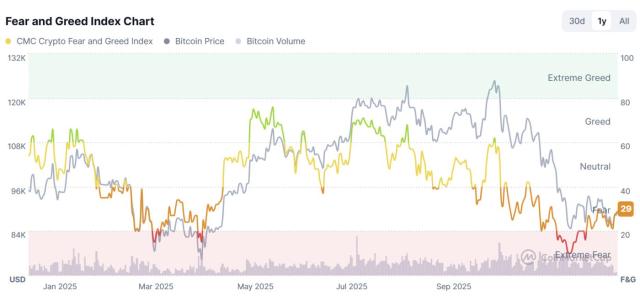Solana's token SOL once rose by more than 24% on November 2, reaching a maximum of $45. It is worth mentioning that SOL has risen nearly 80% in the past 30 days, outperforming many cryptocurrencies.
Analysts believe that it is obvious that this rise in SOL is a typical short squeeze (note: also known as short squeeze and short squeeze, which mainly occurs due to market supply and demand relations, rather than changes in fundamentals). But one voice that boosted SOL's rise believes that Solana's rise is because it is as good as the Ethereum blockchain and can even replace Ethereum.
Due to the deep binding between FTX and Solana, Solana was particularly hard hit by the FTX crash. FTX has invested in Solana and many projects based on Solana. For example, FTX co-created Serum, a now-defunct DeFi protocol, with the Solana Foundation. In its heyday, Serum was the backbone of the Solana ecological DeFi.
The Solana Foundation also holds millions of dollars worth of FTX shares and FTT tokens. When FTX fell, Solana suffered losses in two ways: first, the size of the treasury assets shrank, and second, the SOL held by FTX was handed over to the liquidator, and SOL faced market selling pressure. The rise in SOL also caused the value of crypto assets held by FTX to increase by nearly $1 billion.
However, due to the continued support of developers (the number of developers grows by more than 40% every year) and the increasing number of Solana believers who refuse to close the protocol. The debate over Solana competing with Ethereum has become one of the most heated topics in the cryptocurrency community today.
Essentially, Solana’s backers say its technology is faster, more scalable, and cheaper to use than the Ethereum blockchain.
SOL’s increase against BTC leads ETH
Bitcoin is the cryptocurrency market leader, and because of this, traders often measure the coin's price in terms of Bitcoin rather than USD, reasoning that if it can't rise beyond Bitcoin, then it's better to put your money in Bitcoin.
Recently, the price action of SOL/BTC has been far more attractive than that of ETH/BTC. In fact, many have noticed that ETH price is weak compared to BTC.
Traders and speculators are also potentially hinting that Ethereum's past is Solana's future, because the past of ETH and the present of SOL are very similar.
From April 2020 to November 2021, the price of Ethereum increased from $100 to $4,700. This comes after ETH experienced its first bear market cycle. During this time, many believed that ETH would disappear like most ICO projects at the time.
But they were wrong. Developers rushed to the Ethereum blockchain, launching tokens and protocols, maintaining market attention and transaction volume throughout the bear market. ETH is performing stronger than ever and is one of the best-performing tokens in the 2020-2021 bull market.
Today, we are seeing a similar situation with Solana. Because Solana has a very close relationship with FTX, after the collapse of FTX, many people believed that Solana had passed its peak. The NFT project DeGods even left Solana and moved to the Ethereum network.
Still, developers continue to build and deploy products on Solana, and its resilience has caught the attention of investors as a potential short squeeze.
Patrick Felder, founder and chief information officer of Prismatic Capital, explained: “All factors were enough to cause SOL to surge. After the FTX clearing agency announced the timetable for selling assets, everyone has either short SOL or is discussing short. "Patrick Felder mainly invests in ETH, but is also increasingly putting money into SOL.
Patrick Felder said all these shorts created a market imbalance that was exploited by SOL believers. "In terms of price, things are changing so fast. Solana has a believer-like community, so there are a lot of people accumulating SOL for the next bull market. This is a classic short squeeze."
The Solana developer community continues to grow
The key factor in Solana's resistance to short sellers is the fanatical developer community, which not only did not rebel after FTX, but also continued to grow. At least according to data from European venture capital firm RockwayX, which invested in Solana, the number of developers on the Solana chain actually surged by 83%. Even Ethereum co-founder Vitalik Buterin has publicly expressed support for the Solana developer community.
The number of people developing on Layer 1 blockchain is a key metric. In the crypto space, developers are generally not required to be paid for building on the blockchain, but Solana had to. Because developers don't know whether the blockchain can continue to operate, and they also have to take the risk of learning the specific development language of the Solana blockchain.
According to the Electric Capitals developer report, Solana currently has nearly 1,000 full-time developers; by comparison, Ethereum has nearly 6,000.
Likewise, Solana's market capitalization is only 8% of Ethereum's market capitalization, so Solana still has a long way to go to achieve long-term success. Despite the short squeeze, FTX is not out of the woods yet. Solana also needs to handle the liquidation of FTX assets. The FTX estate currently holds $120 million worth of SOL, and as the bankruptcy proceeds, these assets will undoubtedly be liquidated.
But those who are bullish on Solana say that once this problem is resolved, Solana's situation will improve.
(The above content is excerpted and reprinted with the authorization of our partner PANews , original text link )
Statement: The article only represents the author's personal views and opinions, and does not represent the BlockCast. All contents and opinions are for reference only and do not constitute investment advice. Investors should make their own decisions and transactions, and the author and BlockCast will not be held responsible for any direct or indirect losses caused by investors' transactions.







